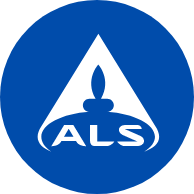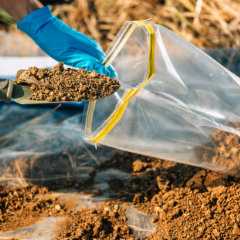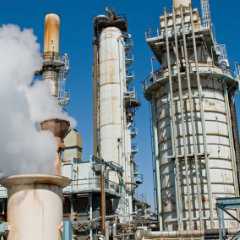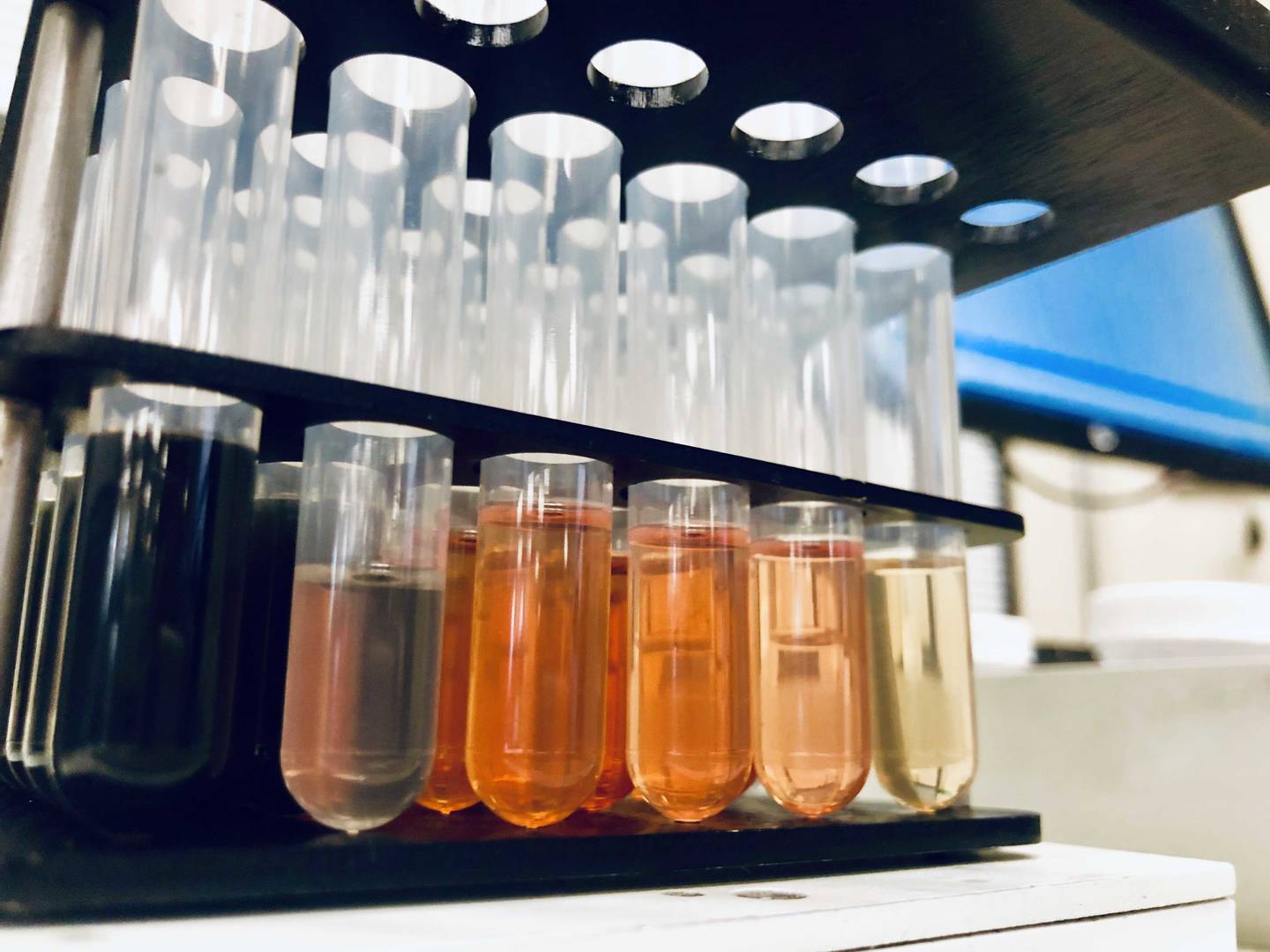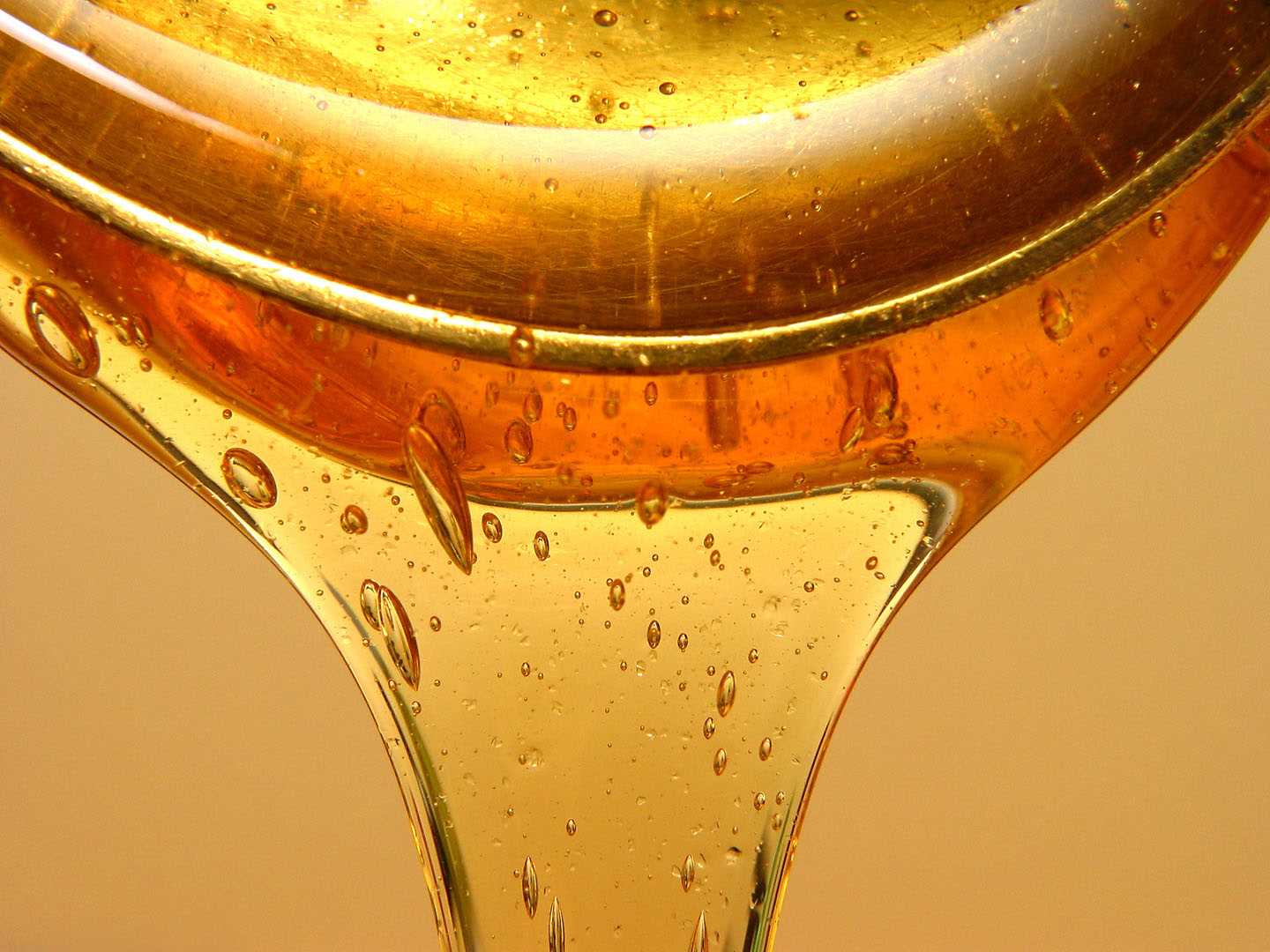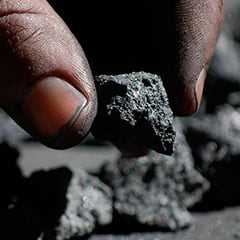EnviroMail 32 USA
Comparing PFAS Testing Methods: EPA 533 vs 537.1, EPA 1633, and More
When testing for PFAS, it is paramount to select the most appropriate PFAS testing method based on the specific project requirements and regulatory landscape.

Contents:
Overview of PFAS Testing and Regulatory Considerations
The Evolving PFAS Regulatory Landscape
The regulatory landscape surrounding PFAS is rapidly changing. While the EPA currently lacks enforceable drinking water standards for PFAS, several states have established their own Maximum Contaminant Levels (MCLs). The EPA recently announced the PFAS Action Plan, outlining a multi-pronged approach to address PFAS contamination, including potential national drinking water regulations. Additionally, the EPA is considering designating certain PFAS as hazardous substances under CERCLA (Comprehensive Environmental Response, Compensation, and Liability Act), potentially triggering mandatory testing and remediation at contaminated sites.
While AFFF (aqueous film-forming foam) and wastewater treatment plants are well-known sources of PFAS contamination, these "forever chemicals" can be found in various unexpected locations.
Sources of PFAS Contamination
Beyond AFFF and Wastewater: Recognizing the Need for PFAS Testing
PFAS contamination can arise from various sources, including:
- Landfills and Leachate: Landfills can harbor PFAS from treated products and packaging materials. Testing landfill leachate for PFAS helps assess potential groundwater contamination risks.
- Biosolids and Land Application: Biosolids from wastewater treatment plants often contain PFAS. Testing biosolids before land application is vital to prevent PFAS from entering the soil and potentially impacting agricultural products.
- Manufacturing Facilities: Industries involved in fluorinated chemicals, textiles, and certain consumer products can release PFAS into the environment. Testing air, water, and soil around these facilities is crucial to identify potential contamination.
- Oil and Gas Production: Hydraulic fracturing fluids used in fracking may contain PFAS. Testing produced water and flowback fluids can help identify potential PFAS releases.
PFAS Testing Methods
Understanding PFAS Testing Methods
PFAS analysis primarily focuses on water and soil samples, with air testing gaining traction. There are two main categories of testing methods:
- Targeted Analysis: These methods focus on a specific list of well-known PFAS compounds, often mandated by regulations.
- Non-targeted Analysis: These methods explore a broader range of unknown PFAS compounds, useful for identifying emerging contaminants.
Key Regulatory Considerations:
Environmental consultants must prioritize compliance with existing and upcoming PFAS regulations. Here are some key drivers:
- EPA's Unregulated Contaminant Monitoring Rule (UCMR): This rule mandates testing for a specific set of PFAS compounds in public water supplies. Methods like EPA Method 537.1 or EPA Method 533 are commonly used for UCMR compliance.
- Safe Drinking Water Act (SDWA): The EPA is expected to establish national drinking water standards (MCLs) for certain PFAS compounds. Testing methods compliant with these future MCLs will be crucial.
- Comprehensive Environmental Response, Compensation, and Liability Act (CERCLA): CERCLA, also known as Superfund, may require PFAS testing at contaminated sites. Methods like EPA Method 1633 are often used for CERCLA investigations.
- Emerging Regulations: Several states have established their own PFAS regulations, and federal regulations are anticipated to become more stringent. Staying updated on these developments is crucial for selecting appropriate testing methods.
Choosing the Right PFAS Testing Method
Method Considerations
Selecting the most suitable PFAS testing method depends on several factors, including:
- Sample Matrix: Are you analyzing water, soil, air, sediment, or biosolids?
- Regulatory Requirements: Are there specific methods mandated by relevant regulations?
- Target Analytes: Are you interested in a broad range of PFAS or specific compounds?
- Cost and Turnaround Time: Budgetary constraints and project timelines may influence method selection.
Here's a breakdown of some common PFAS testing methods and their applications:
EPA Method 533 vs EPA 537.1
EPA 533 and EPA Methods 537 Rev 1.1 & 537.1.1 are targeted analysis methods frequently used for UCMR (Unregulated Contaminant Monitoring Rule) compliance and are likely to be referenced in upcoming SDWA (Safe Drinking Water Act) regulations. They offer good sensitivity for a defined list of PFAS compounds in drinking water.
It's important to note that EPA Method 537.1 and EPA Method 533 are both designed for drinking water analysis, but one does not override the other. They are two completely different methodologies with distinct compound lists, although the majority of the compounds overlap. Each method has its specific applications and strengths:
Key differences between EPA Method 533 and EPA 537.1:
- EPA Method 533 can detect some shorter-chain PFAS not covered by EPA 537.1
- EPA 537.1 includes a broader range of long-chain PFAS compounds
- The methods use different extraction and analysis techniques, which can affect their performance for certain PFAS compounds
Depending on the specific project requirements and target analytes, laboratories may need to use both methods to provide comprehensive PFAS analysis in drinking water.
EPA Method 1633
EPA Method 1633 is a comprehensive method used for analyzing a wider range of PFAS compounds in various environmental matrices like soil, sediment, and biosolids. It is often employed for CERCLA (Comprehensive Environmental Response, Compensation, and Liability Act) investigations and may be relevant for future regulations.
It's worth noting that while 537M (a modified version of EPA Method 537) has been an acceptable methodology for analysis of non-drinking water matrices, it is not a promulgated method. EPA Method 1633 is likely to slowly replace 537M as the preferred method for non-drinking water PFAS analysis. This shift reflects the EPA's efforts to standardize PFAS testing across various environmental matrices and provide more comprehensive analytical capabilities.
Other PFAS Testing Methods
- EPA Method 537M: This targeted analysis method is specifically designed for analyzing PFAS in multiple environmental matrices, including drinking water, non-potable water, and wastewater.
- EPA Method 8327: This method focuses on explosives analysis but can also detect some PFAS compounds used in firefighting foams. It might be necessary for sites with a history of AFFF usage.
- ASTM Methods (D7979-17, D7968-17a, D8421-22): These ASTM International standards offer alternative methods for analyzing specific elements or PFAS precursors in water.
- Method OTM-45: This stack testing method might be relevant for niche applications or emerging contaminants in air emissions from stationary sources.
EPA Method 533 vs EPA 537.1 vs EPA Method 1633
The choice between EPA Methods 533, 537.1, and 1633 hinges on several key factors:
- Matrix: Methods 533 and 537.1 are primarily designed for drinking water samples, while Method 1633 can analyze water, soil, sediment, and biosolids.
- Regulatory Requirements: Methods 533 and 537.1 align with existing drinking water regulations, making them ideal for compliance testing. Method 1633 offers a broader scope and is becoming increasingly important for non-drinking water matrices, potentially replacing 537 Mod in many applications.
- Project Objectives: For targeted PFAS analysis in drinking water for compliance purposes, Methods 533 or 537.1 are sufficient. If comprehensive characterization across various matrices is needed, especially for non-drinking water samples, Method 1633 is the better choice.
EPA Analytical Methods for PFAS - A Comprehensive PFAS Analytes Reference Table:
This table provides a detailed comparison of various PFAS testing methods, including their respective matrices and individual analytes.
| |
Analyte | Abbreviation | CASRN | Synonym/Anion Name | CASRN | Method 537 Rev 1.1 | Method 537.1 | Method 533 | Method 537M | Method 1633 | Method 8327 | ASTM D7979 - 17 | ASTM D7968 - 17a | ASTM D8421-22 | Method OTM-45 |
|---|---|---|---|---|---|---|---|---|---|---|---|---|---|---|---|
| Drinking Water | Multiple Matrices | Multiple Matrices | Non-Potable Water | Water, Sludge | Soil, Sludge | Multiple Matrices | Air | ||||||||
| Perfluoroalkyl carboxylic acids (PFCAs) | |||||||||||||||
| 1 | Pentafluorpropanoic acid | PFPrA | 422-64-0 | ✓ | |||||||||||
| 2 | Perfluorobutanoic acid | PFBA | 375-22-4 | Perfluorobutanoate | 45048-62-2 | ✓ | ✓ | ✓ | ✓ | ✓ | ✓ | ✓ | ✓ | ||
| 3 | Perfluoropentanoic acid | PFPeA | 2706-90-3 | Perfluoropentanoate | 45167-47-3 | ✓ | ✓ | ✓ | ✓ | ✓ | ✓ | ✓ | ✓ | ||
| 4 | Perfluorohexanoic acid | PFHxA | 307-24-4 | Perfluorohexanoate | 92612-52-7 | ✓ | ✓ | ✓ | ✓ | ✓ | ✓ | ✓ | ✓ | ✓ | ✓ |
| 5 | Perfluoroheptanoic acid | PFHpA | 375-85-9 | Perfluoroheptanoate | 120885-29-2 | ✓ | ✓ | ✓ | ✓ | ✓ | ✓ | ✓ | ✓ | ✓ | ✓ |
| 6 | Perfluorooctanoic acid | PFOA | 335-67-1 | Perfluorooctanoate | 45285-51-6 | ✓ | ✓ | ✓ | ✓ | ✓ | ✓ | ✓ | ✓ | ✓ | ✓ |
| 7 | Perfluorononanoic acid | PFNA | 375-95-1 | Perfluorononanoate | 72007-68-2 | ✓ | ✓ | ✓ | ✓ | ✓ | ✓ | ✓ | ✓ | ✓ | ✓ |
| 8 | Perfluorodecanoic acid | PFDA | 335-76-2 | Perfluorodecanoate | 73829-36-4 | ✓ | ✓ | ✓ | ✓ | ✓ | ✓ | ✓ | ✓ | ✓ | ✓ |
| 9 | Perfluoroundecanoic acid | PFUnA | 2058-94-8 | Perfluoroundecanoate (PFUnDA) | 196859-54-8 | ✓ | ✓ | ✓ | ✓ | ✓ | ✓ | ✓ | ✓ | ✓ | ✓ |
| 10 | Perfluorododecanoic acid | PFDoA | 307-55-1 | Perfluorododecanoate (PFDoDA) | 171978-95-3 | ✓ | ✓ | ✓ | ✓ | ✓ | ✓ | ✓ | ✓ | ✓ | ✓ |
| 11 | Perfluorotridecanoic acid | PFTrDA | 72629-94-8 | Perfluorotridecanoate (PFTriA) | 862374-87-6 | ✓ | ✓ | ✓ | ✓ | ✓ | ✓ | ✓ | ✓ | ✓ | |
| 12 | Perfluorotetradecanoic acid | PFTeDA | 376-06-7 | Perfluorotetradecanoate (PFTreA) / (PFTA) | 365971-87-5 | ✓ | ✓ | ✓ | ✓ | ✓ | ✓ | ✓ | ✓ | ✓ | |
| 13 | Perfluoro-n-hexadecanoic acid | PFHxDA | 67905-19-5 | ✓ | |||||||||||
| 14 | Perfluoro-n-octadecanoic acid | PFODA | 16517-11-6 | ✓ | |||||||||||
| Perfluoroalkyl sulfonic acids (PFSAs) (Acid Form) | |||||||||||||||
| 15 | Perfluorobutanesulfonic acid | PFBS | 375-73-5 | Perfluorobutane sulfonate | 45187-15-3 | ✓ | ✓ | ✓ | ✓ | ✓ | ✓ | ✓ | ✓ | ✓ | ✓ |
| 16 | Perfluoropentanesulfonic acid | PFPeS | 2706-91-4 | Perfluoropentane sulfonate | 175905-36-9 | ✓ | ✓ | ✓ | ✓ | ✓ | ✓ | ||||
| 17 | Perfluorohexanesulfonic acid | PFHxS | 355-46-4 | Perfluorohexane sulfonate | 108427-53-8 | ✓ | ✓ | ✓ | ✓ | ✓ | ✓ | ✓ | ✓ | ✓ | ✓ |
| 18 | Perfluoroheptanesulfonic acid | PFHpS | 375-92-8 | Perfluoroheptane sulfonate | 146689-46-5 | ✓ | ✓ | ✓ | ✓ | ✓ | ✓ | ||||
| 19 | Perfluorooctanesulfonic acid | PFOS | 1763-23-1 | Perfluorooctane sulfonate | 45298-90-6 | ✓ | ✓ | ✓ | ✓ | ✓ | ✓ | ✓ | ✓ | ✓ | ✓ |
| 20 | Perfluorononanesulfonic acid | PFNS | 68259-12-1 | Perfluorononane sulfonate | 474511-07-4 | ✓ | ✓ | ✓ | ✓ | ✓ | |||||
| 21 | Perfluorodecanesulfonic acid | PFDS | 335-77-3 | Perfluorodecane sulfonate | 126105-34-8 | ✓ | ✓ | ✓ | ✓ | ✓ | |||||
| 22 | Perfluorododecanesulfonic acid | PFDoS | 79780-39-5 | Perfluorododecane sulfonate | 343629-43-6 | ✓ | ✓ | ✓ | |||||||
| Fluorotelomer sulfonic acids (FTSAs) | |||||||||||||||
| 23 | 1H,1H, 2H, 2H-Perfluorohexane sulfonic acid | 4:2FTS | 757124-72-4 | ✓ | ✓ | ✓ | ✓ | ✓ | ✓ | ||||||
| 24 | 1H,1H, 2H, 2H-Perfluorooctane sulfonic acid | 6:2FTS | 27619-97-2 | ✓ | ✓ | ✓ | ✓ | ✓ | ✓ | ||||||
| 25 | 1H,1H, 2H, 2H-Perfluorodecane sulfonic acid | 8:2FTS | 39108-34-4 | ✓ | ✓ | ✓ | ✓ | ✓ | ✓ | ||||||
| 26 | 1H, 1H, 2H, 2H-Perfluorododecane sulfonate | 10:2 FTS | 120226-60-0 | ✓ | ✓ | ||||||||||
| Perfluorooctane sulfonamides | |||||||||||||||
| 27 | Perfluorooctanesulfonamide | PFOSA/FOSA | 754-91-6 | ✓ | ✓ | ✓ | ✓ | ✓ | |||||||
| 28 | N-Methylperfluorooctanesulfonamide | NMeFOSA/MeFOSA | 31506-32-8 | ✓ | ✓ | ✓ | ✓ | ||||||||
| 29 | N-ethylperfluorooctanesulfonamide | NEtFOSA/EtFOSA | 4151-50-2 | ✓ | ✓ | ✓ | ✓ | ||||||||
| Perfluorooctane sulfonamidoacetic acids | |||||||||||||||
| 30 | N-methyl perfluorooctanesulfonamidoacetic acid | NMeFOSAA | 2355-31-9 | ✓ | ✓ | ✓ | ✓ | ✓ | ✓ | ✓ | |||||
| 31 | N-ethyl perfluorooctanesulfonamidoacetic acid | NEtFOSAA | 2991-50-6 | ✓ | ✓ | ✓ | ✓ | ✓ | ✓ | ✓ | |||||
| Perfluorooctane sulfonamide ethanols | |||||||||||||||
| 32 | 2-(N-methylperfluoro-1-octanesulfonamido)-ethanol | N-MeFOSE | 24448-09-7 | ✓ | ✓ | ✓ | ✓ | ||||||||
| 33 | 2-(N-ethylperfluoro-1-octanesulfonamido)-ethanol | N-EtFOSE | 1691-99-2 | ✓ | ✓ | ✓ | ✓ | ||||||||
| Per- and Polyfluoroalkyl ether carboxylic acids (PFECAs) | |||||||||||||||
| 34 | Hexafluoropropylene oxide dimer acid | HFPO-DA | 13252-13-6 | ✓ | ✓ | ✓ | ✓ | ✓ | ✓ | ||||||
| 35 | 4,8-Dioxa-3H-perfluorononanoic acid | ADONA | 919005-14-4 | ✓ | ✓ | ✓ | ✓ | ✓ | |||||||
| 36 | Perfluoro-3-methoxypropanoic acid | PFMPA | 377-73-1 | ✓ | ✓ | ✓ | ✓ | ||||||||
| 37 | Perfluoro-4-methoxybutanoic acid | PFMBA | 863090-89-5 | ✓ | ✓ | ✓ | ✓ | ||||||||
| 38 | Nonafluoro-3,6-dioxaheptanoic acid | NFDHA | 151772-58-6 | ✓ | ✓ | ✓ | ✓ | ||||||||
| Perfluoroalkyl ether sulfonic acids (PFESAs) | |||||||||||||||
| 39 | 9-Chlorohexadecafluoro-3-oxanonane-1-sulfonic acid | 9Cl-PF3ONS | 756426-58-1 | ✓ | ✓ | ✓ | ✓ | ✓ | |||||||
| 40 | 11-Chloroeicosafluoro-3-oxaundecane-1-sulfonic acid | 11Cl-PF3OUdS | 763051-92-9 | ✓ | ✓ | ✓ | ✓ | ✓ | |||||||
| 41 | Perfluoro(2-ethoxyethane)sulfonic acid | PFEESA | 113507-82-7 | ✓ | ✓ | ✓ | ✓ | ||||||||
| Fluorotelomer carboxylic acids (FTCAs) | |||||||||||||||
| 42 | 3:3 Fluorotelomer carboxylic acid | 3:3 FTCA | 356-02-5 | ✓ | ✓ | ✓ | |||||||||
| 43 | 5:3 Fluorotelomer carboxylic acid | 5:3 FTCA | 914637-49-3 | ✓ | ✓ | ✓ | |||||||||
| 44 | 3-perfluoroheptyl propanoic acid 2H,2H,3H,3H-Perfluorodecanoic acid |
7:3 FTCA FHpPA |
812-70-4 | 7:3 FTCA | ✓ | ✓ | ✓ | ✓ | ✓ | ||||||
| Others | |||||||||||||||
| 45 | Sodium perfluoro-1-dodecanesulfonate | PFDoS | 1260224-54-1 | ✓ | |||||||||||
| 46 | Decafluoro-4-(pentafluoroethyl) cyclohexanesulfonate | PFecHS | 67584-42-3 | ✓ | ✓ | ✓ | |||||||||
| 47 | 2-perfluorohexyl ethanoic acid | FHEA | 53826-12-3 | 6:2 FTCA | ✓ | ✓ | ✓ | ||||||||
| 48 | 2-perfluorooctyl ethanoic acid | FOEA | 27854-31-5 | 8:2 FTA | ✓ | ✓ | ✓ | ||||||||
| 49 | 2-perfluorodecyl ethanoic acid | FDEA | 53826-13-4 | 10:2 FDEA | ✓ | ✓ | ✓ | ||||||||
| 50 | 2H-perfluoro-2-decenoic acid | FOUEA | 70887-84-2 | 8:2 FTUCA | ✓ | ✓ | ✓ | ✓ | |||||||
| 51 | 2H-perfluoro-2-octenoic acid | FHUEA | 70887-88-6 | 6:2 FHUEA | ✓ | ✓ | ✓ | ✓ | |||||||
| 52 | Lithium Bis(trifluoromethane)sulfonimideA | HQ-115 | 90076-65-6 | ✓ | |||||||||||
Selecting the most suitable PFAS testing method requires careful consideration of project objectives, regulatory requirements, and the specific environmental matrix being analyzed. By understanding the strengths and limitations of available methods, environmental consultants can make informed decisions, ensuring regulatory compliance and protecting human health and the environment.
Staying Ahead of the Curve
The PFAS regulatory landscape is rapidly evolving. Consultants who stay updated on emerging regulations and possess a deep understanding of testing methods will be well-positioned to navigate this complex field and provide valuable services to their clients.
Contact ALS today to learn more about EPA PFAS methods available for project.
